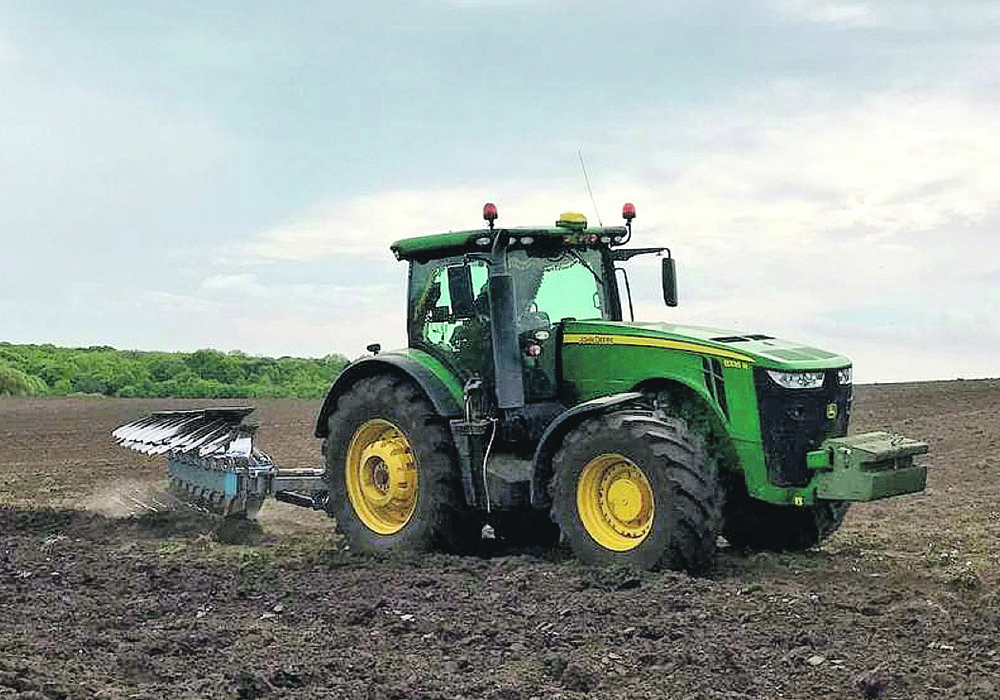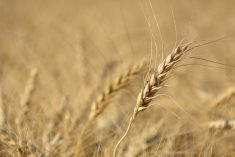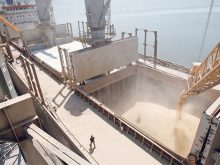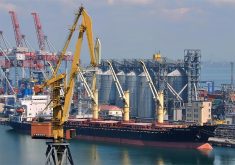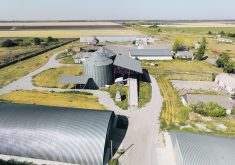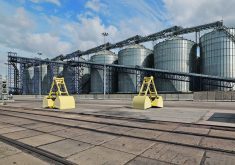A producer in western Ukraine starts land preparation and planting, armed with whatever farm inputs he has available
Even with a war going on around him, Ukrainian farmer Serhiy Ivaschuk has despatched his tractors and machinery to work in the fields to get this year’s crops planted.
Ivaschuk operates a mixed dairy and arable farm with about 17,000 acres in the west of Ukraine in the Khmelnytskyi region, 350 kilometres southwest of Kyiv.
While the Russian invasion of Ukraine will affect food security around the world, Ukraine farmers are making a gallant effort to get as many crops planted as they can.
The Ukraine Ministry of Agriculture projects 14.9 million acres for the main spring crops in territory controlled by Ukraine. That is 4.2 million acres less than last year.
Ivaschuk and his team are forging ahead with their own crops, which also includes growing feed for his 1,400 dairy cows.
Ivaschuk, whose farm is called Perlyna Podillya Ltd, said: “Our farm runs both livestock and arable enterprises. We operate (16,800 acres) of arable land and keep 1,400 dairy cows.
“Mostly we grow wheat, corn, sunflowers, barley, soya, rapeseed, sugarbeet, potatoes and fodder crops. Around 25 percent of our growing area is used to grow wheat and then corn, sunflowers and rapeseed are the next most popular. Last year we were able to harvest 7.4 tonnes of wheat per hectare (2.9 tonnes per acre).”
Armed with whatever agricultural inputs he has available on the farm, Ivaschuk has already started land preparation and planting.
“This year we are trying to keep the same sowing structure as last year. However, it’s hard to predict that for now. We’ve started sowing with the available agri inputs of seeds and fertilizer we have on the farm. If we don’t get more inputs, then the sowing structure will be changed,” he said.
“This year we have to make every effort to grow as much a harvest as possible. As most farmers are unable to plant this year, the regions with no active hostilities are hugely responsible for our country’s food security,” he said.
Although there are no hostilities in the immediate region where Serhiy’s farm is based, airstrikes and missile attacks on neighbouring Lviv and Zhytomyr regions have become more frequent.
Diesel fuel availability is one of the more concerning issues Ukrainian farmers are facing during this planting season and further into harvesting.
Ukraine normally imports around 60 percent of its diesel fuel requirements from Russia and Belarus and a further 25 percent by sea through the ports. However, as these supply lines are cut off, and Ukraine only produces 15 percent of its own diesel, then it must buy from European countries next to it.
The normal requirement to June is 250,000 tonnes of diesel but there are only an estimated 50,000 tonnes in Ukraine. This figure may even be less now because some stocks have recently been blown up by the Russians.
Regarding his own situation, Ivaschuk said: “Our own agri inputs are more or less sufficient for now and the diesel stocks should be enough for the sowing.
“We may run short of seeds, fertilizers and crop-protection products. Before the war started, we had made several pre-payments for supplies from our credit lines.

“However, the logistics and supply chains are broken now, so our suppliers can’t provide us with the inputs.”
Ukraine has about 35 million tonnes of grains and oilseeds in storage from last year and needs seven million tonnes of that for domestic consumption. The remainder, which is destined for world markets, cannot be sold due to the Russians cutting off export ports.
“We have a lot of corn and some wheat in storage to sell. As our farm is located far away from the seaports, we usually export through the Polish border by railway,” Ivaschuk said.
“Today there are logistic restrictions and we can’t use the railway for this. But exports now would help us to get working capital for future guarantees, “ he said.
“We use wheat stocks for the internal needs and supply to the regions where hostilities take place and there is also a need to support the army and people. Our farm work now concentrates on ensuring food security of the country.”
Ukrainian president Volodymyr Zelenskyy told the recent G7 summit that a global food crisis could come as a result of the war.

